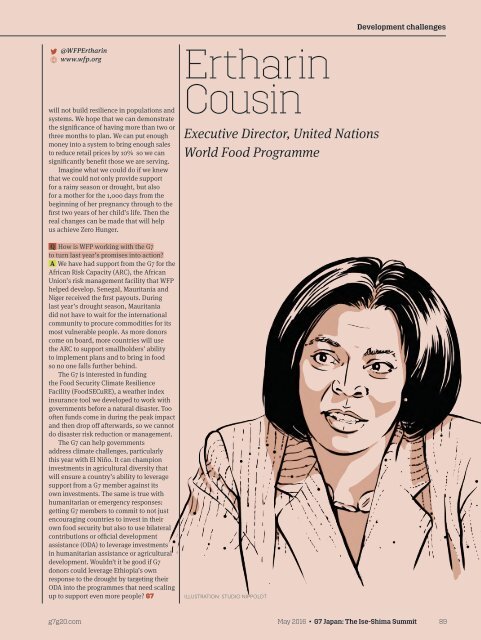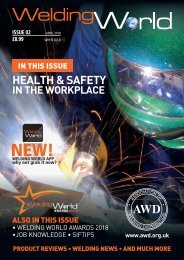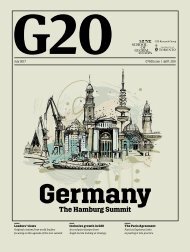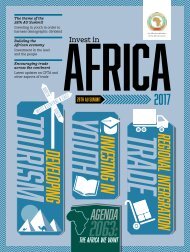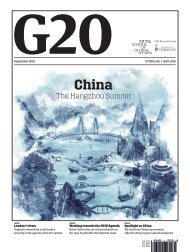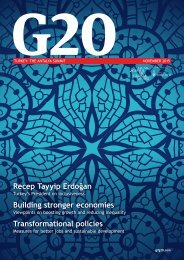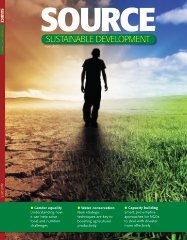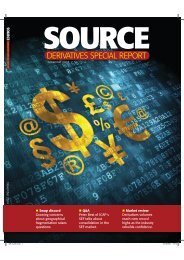G7_JAPAN
Create successful ePaper yourself
Turn your PDF publications into a flip-book with our unique Google optimized e-Paper software.
Development challenges<br />
@WFPErtharin<br />
www.wfp.org<br />
will not build resilience in populations and<br />
systems. We hope that we can demonstrate<br />
the significance of having more than two or<br />
three months to plan. We can put enough<br />
money into a system to bring enough sales<br />
to reduce retail prices by 10% so we can<br />
significantly benefit those we are serving.<br />
Imagine what we could do if we knew<br />
that we could not only provide support<br />
for a rainy season or drought, but also<br />
for a mother for the 1,000 days from the<br />
beginning of her pregnancy through to the<br />
first two years of her child’s life. Then the<br />
real changes can be made that will help<br />
us achieve Zero Hunger.<br />
Q How is WFP working with the <strong>G7</strong><br />
to turn last year’s promises into action?<br />
A We have had support from the <strong>G7</strong> for the<br />
African Risk Capacity (ARC), the African<br />
Union’s risk management facility that WFP<br />
helped develop. Senegal, Mauritania and<br />
Niger received the first payouts. During<br />
last year’s drought season, Mauritania<br />
did not have to wait for the international<br />
community to procure commodities for its<br />
most vulnerable people. As more donors<br />
come on board, more countries will use<br />
the ARC to support smallholders’ ability<br />
to implement plans and to bring in food<br />
so no one falls further behind.<br />
The <strong>G7</strong> is interested in funding<br />
the Food Security Climate Resilience<br />
Facility (FoodSECuRE), a weather index<br />
insurance tool we developed to work with<br />
governments before a natural disaster. Too<br />
often funds come in during the peak impact<br />
and then drop off afterwards, so we cannot<br />
do disaster risk reduction or management.<br />
The <strong>G7</strong> can help governments<br />
address climate challenges, particularly<br />
this year with El Niño. It can champion<br />
investments in agricultural diversity that<br />
will ensure a country’s ability to leverage<br />
support from a <strong>G7</strong> member against its<br />
own investments. The same is true with<br />
humanitarian or emergency responses:<br />
getting <strong>G7</strong> members to commit to not just<br />
encouraging countries to invest in their<br />
own food security but also to use bilateral<br />
contributions or official development<br />
assistance (ODA) to leverage investments<br />
in humanitarian assistance or agricultural<br />
development. Wouldn’t it be good if <strong>G7</strong><br />
donors could leverage Ethiopia’s own<br />
response to the drought by targeting their<br />
ODA into the programmes that need scaling<br />
up to support even more people? <strong>G7</strong><br />
Ertharin<br />
Cousin<br />
Executive Director, United Nations<br />
World Food Programme<br />
ILLUSTRATION: STUDIO NIPPOLDT<br />
g7g20.com May 2016 • <strong>G7</strong> Japan: The Ise-Shima Summit 89


